No products in the cart.
Great news! The Canada Post strike is over! We’re resuming deliveries to Canada!
Excellente nouvelle ! La grève de Postes Canada est terminée ! Nous reprenons les livraisons vers le Canada !
Great news! The Canada Post strike is over! We’re resuming deliveries to Canada!
Excellente nouvelle ! La grève de Postes Canada est terminée ! Nous reprenons les livraisons vers le Canada !

Affida Plus film-coated tablets 200 mg/500 mg blister 10 pcs.
$15.99
Free Worldwide Shipping
Estimated delivery:
14 - 21 days
Categories: Pain relief
Brand: Schonen
Affida Plus is indicated for the symptomatic treatment of mild to moderate pain associated with migraine, headache, back pain, menstrual pain, toothache, rheumatic and muscular pain, pain associated with mild forms of arthritis, symptoms of colds and flu, sore throat and fever. This medicine is particularly suitable for the treatment of pain requiring a stronger analgesic effect than that of ibuprofen or paracetamol used alone.
Affida Plus is indicated for the symptomatic treatment of mild to moderate pain associated with migraine, headache, back pain, menstrual pain, toothache, rheumatic and muscular pain, pain associated with mild forms of arthritis, symptoms of colds and flu, sore throat and fever. This medicine is particularly suitable for the treatment of pain requiring a stronger analgesic effect than that of ibuprofen or paracetamol used alone.
Composition
- active ingredients: ibuprofen; paracetamol;
- 1 film-coated tablet contains 200 mg of ibuprofen and 500 mg of paracetamol;
- excipients: corn starch, povidone (E 1201), croscarmellose sodium, microcrystalline cellulose (E 460), colloidal anhydrous silica, glycerol dibehenate; Opadry White AMB II (polyvinyl alcohol, partially hydrolyzed; talc; titanium dioxide (E 171); glycerol monocaprylocaprate; sodium lauryl sulfate).
Contraindication
This drug is contraindicated:
- patients with known individual hypersensitivity to ibuprofen, paracetamol or any of the excipients;
- • when used simultaneously with other drugs containing paracetamol, due to an increased risk of serious adverse reactions;
- patients with a history of hypersensitivity reactions (e.g. bronchospasm, angioedema, bronchial asthma, rhinitis or urticaria) after taking ibuprofen, acetylsalicylic acid or other non-steroidal anti-inflammatory drugs (NSAIDs);
- patients with a history of gastrointestinal bleeding or perforation associated with the use of NSAIDs;
- with gastric and duodenal ulcer/bleeding in active form or history of relapses (two or more severe episodes of ulcer or bleeding);
- patients with blood clotting disorders.
Adverse reactions
- On the part of the blood and lymphatic system – very rarely, disorders of the hematopoietic system.
- Immune system disorders: Uncommon: Hypersensitivity reactions including urticaria and pruritus. Very rare: Severe hypersensitivity reactions. Symptoms may include swelling of the face, tongue and larynx, shortness of breath, tachycardia, hypotension (anaphylaxis, angioedema or severe shock).
- Mental disorders – very rarely confusion, depression and hallucinations.
- Nervous system disorders: Uncommon: headache and dizziness. Very rare: aseptic meningitis, paresthesia, optic neuritis and drowsiness.
- On the part of the organs of vision – very rarely visual impairment.
Method of application
For oral short-term use only.
The lowest effective dose should be used for the shortest time necessary to relieve symptoms.
If the symptoms of the disease persist for more than 3 days, it is necessary to consult a doctor to clarify the diagnosis and adjust the treatment regimen. The duration of treatment is determined by the doctor individually, depending on the course of the disease and the patient’s condition.
Adults should take 1 tablet up to 3 times a day with an interval of at least 6 hours between doses. Swallow the tablets with water.
If 1 tablet does not relieve the symptoms of the disease, 2 tablets should be taken at a time, but not more than 3 times a day. The interval between doses should be at least 6 hours. Do not take more than 6 tablets (3000 mg of paracetamol, 1200 mg of ibuprofen) within 24 hours.
To minimize the likelihood of side effects, take the drug with meals.
Application features
Use during pregnancy or breastfeeding
There is no experience with the use of the drug in pregnant women.
The drug is contraindicated in the third trimester of pregnancy.
Ibuprofen and its metabolites may pass into breast milk in very low concentrations (0.0008% of the maternal dose). Harmful effects on infants are unknown.
There is no need to discontinue breastfeeding during short-term therapy with this drug at recommended doses.
Children
Do not use in children (under 18 years of age).
Ability to influence reaction speed when driving vehicles or other mechanisms
Side effects such as dizziness, drowsiness, fatigue, and visual disturbances are possible after taking NSAIDs. Patients who experience these side effects should not drive or operate machinery.
Overdose
Paracetamol.
Liver damage is possible in adults who have taken 10 g (equivalent to 20 tablets) or more of paracetamol. Taking 5 g (equivalent to 10 tablets) or more of paracetamol can lead to liver damage if:
- the patient is receiving long-term treatment with carbamazepine, phenobarbitone, phenytoin, primidone, rifampicin, St. John’s wort, or drugs that induce liver enzymes.
- the patient regularly consumes alcohol;
- the patient is likely to be glutathione deficient, such as having fibrocystic degeneration, HIV infection, cachexia, or starvation.
Storage conditions
Store at a temperature not exceeding 25 ° C. Keep out of the reach of children.
Be the first to review “Affida Plus film-coated tablets 200 mg/500 mg blister 10 pcs.” Cancel reply
You may also like


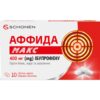
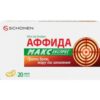
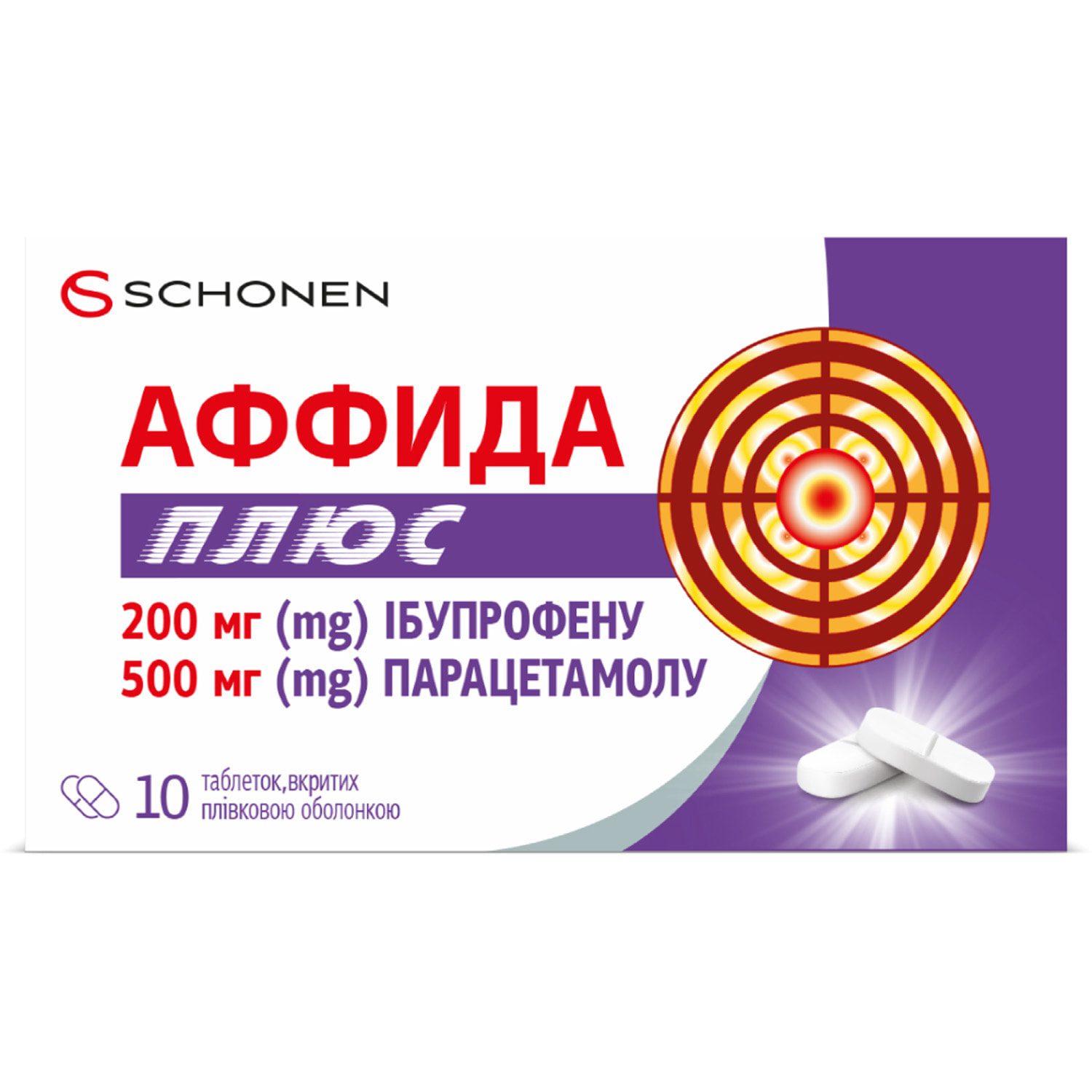
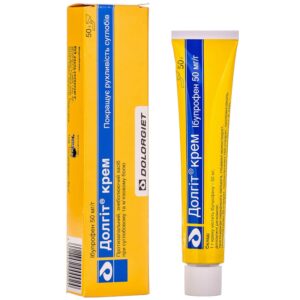
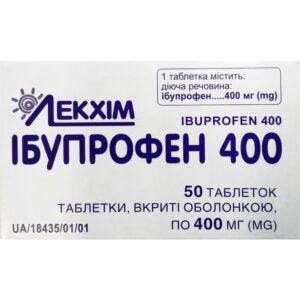
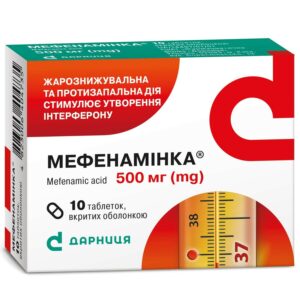
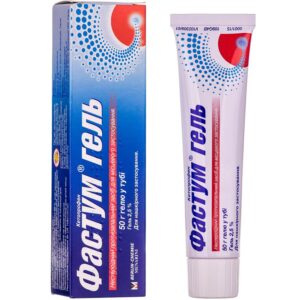
Reviews
There are no reviews yet.